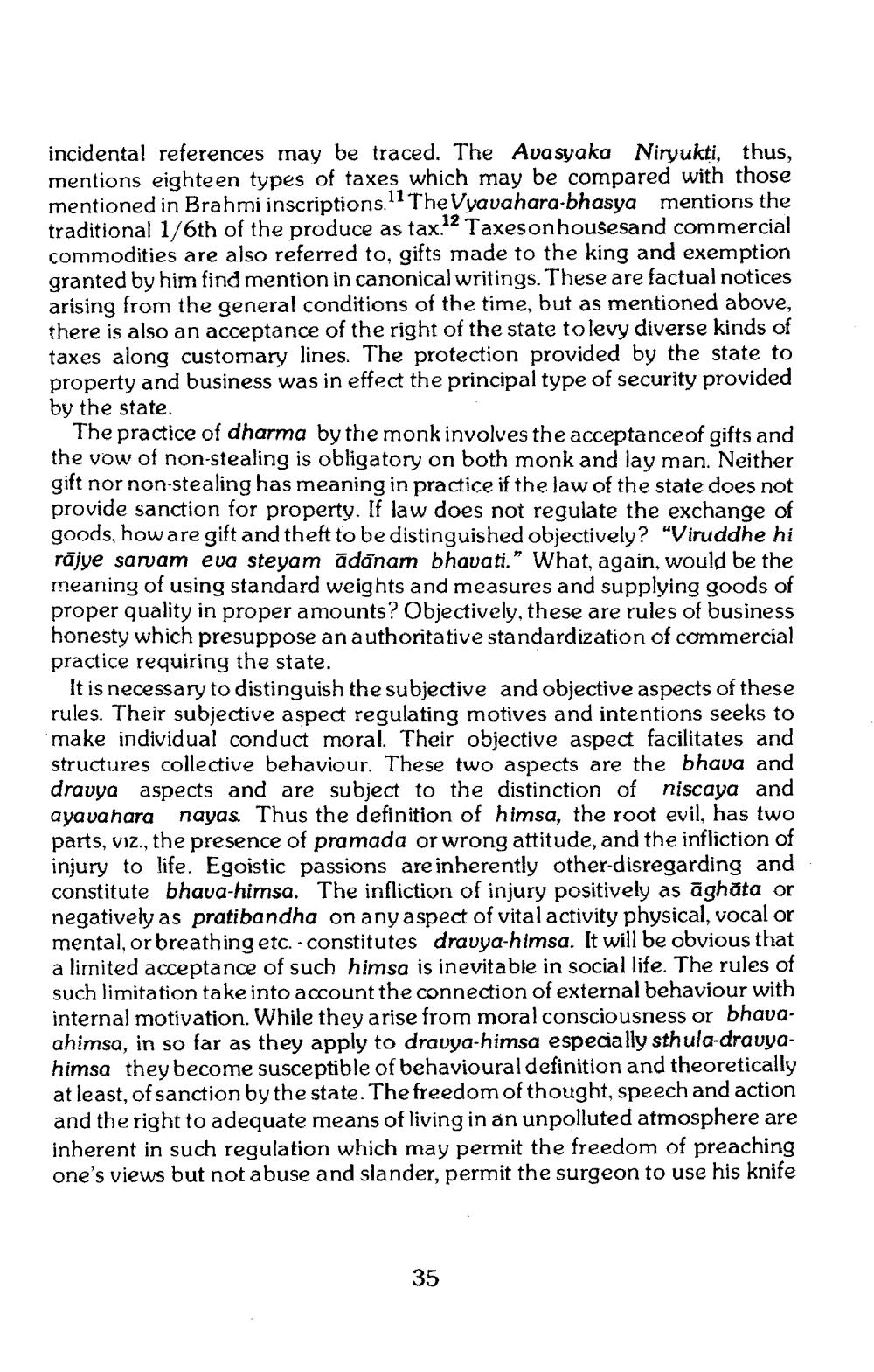________________
incidental references may be traced. The Avasyaka Niryukti, thus, mentions eighteen types of taxes which may be compared with those mentioned in Brahmi inscriptions." The Vyavahara-bhasya mentionis the traditional 1/6th of the produce as tax.2 Taxesonhousesand commercial commodities are also referred to, gifts made to the king and exemption granted by him find mention in canonical writings. These are factual notices arising from the general conditions of the time, but as mentioned above, there is also an acceptance of the right of the state to levy diverse kinds of taxes along customary lines. The protection provided by the state to property and business was in effect the principal type of security provided by the state.
The practice of dharma by the monk involves the acceptanceof gifts and the vow of non-stealing is obligatory on both monk and lay man. Neither gift nor non-stealing has meaning in practice if the law of the state does not provide sanction for property. If law does not regulate the exchange of goods, how are gift and theft to be distinguished objectively? "Viruddhe hi rājye saruam eva steyam ādānam bhavati." What, again, would be the meaning of using standard weights and measures and supplying goods of proper quality in proper amounts? Objectively, these are rules of business honesty which presuppose an authoritative standardization of commercial practice requiring the state.
It is necessary to distinguish the subjective and objective aspects of these rules. Their subjective aspect regulating motives and intentions seeks to make individual conduct moral. Their objective aspect facilitates and structures collective behaviour. These two aspects are the bhava and dravya aspects and are subject to the distinction of niscaya and ayavahara nayas. Thus the definition of himsa, the root evil, has two parts, viz., the presence of pramada or wrong attitude, and the infliction of injury to life. Egoistic passions are inherently other-disregarding and constitute bhava-himsa. The infliction of injury positively as āghăta or negatively as pratibandha on any aspect of vital activity physical, vocal or mental, or breathing etc. - constitutes dravya-himsa. It will be obvious that a limited acceptance of such himsa is inevitable in social life. The rules of such limitation take into account the connection of external behaviour with internal motivation. While they arise from moral consciousness or bhavaahimsa, in so far as they apply to dravya-himsa especially sthula-dravyahimsa they become susceptible of behavioural definition and theoretically at least, of sanction by the state. The freedom of thought, speech and action and the right to adequate means of living in an unpolluted atmosphere are inherent in such regulation which may permit the freedom of preaching one's views but not abuse and slander, permit the surgeon to use his knife
35




